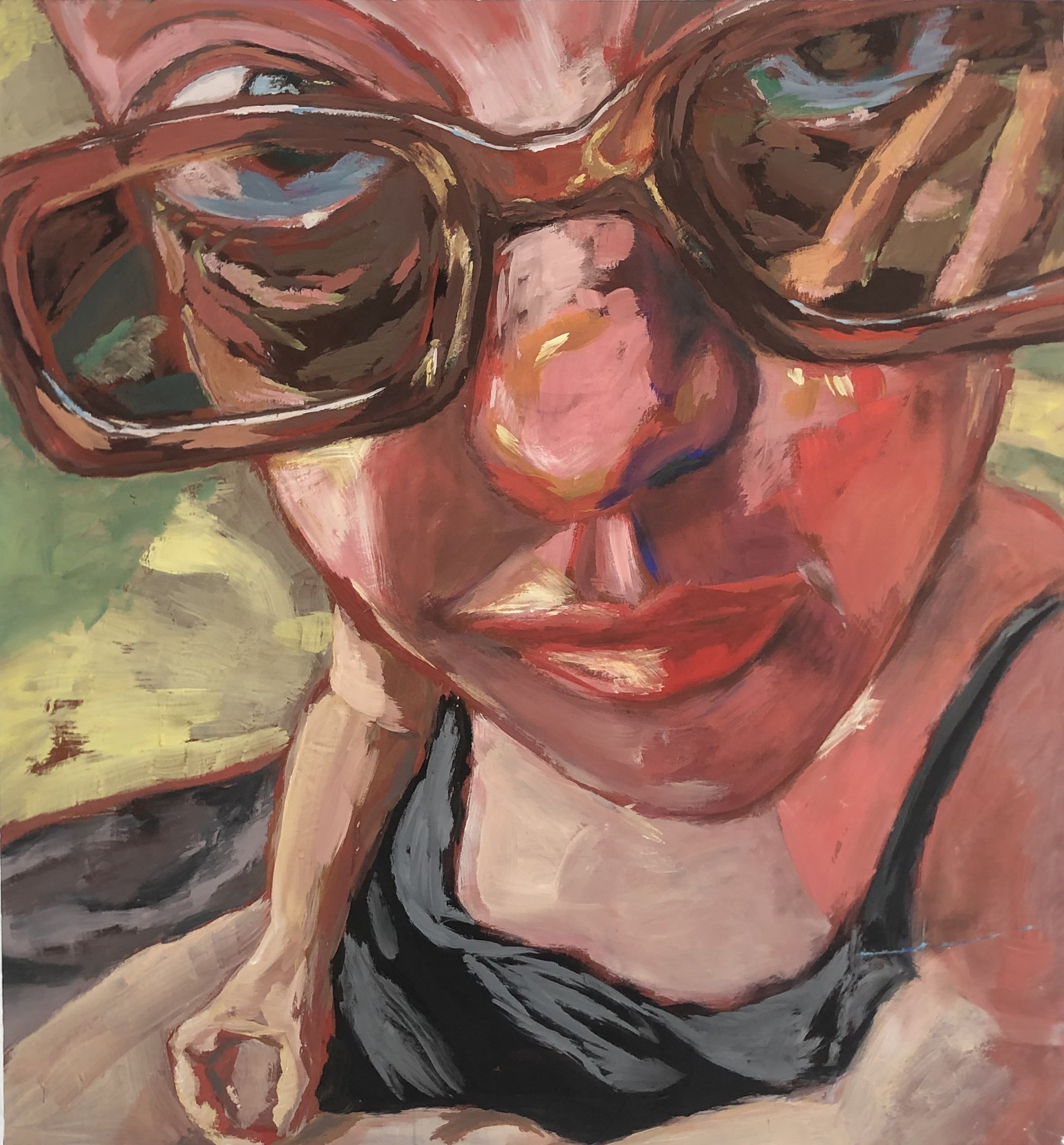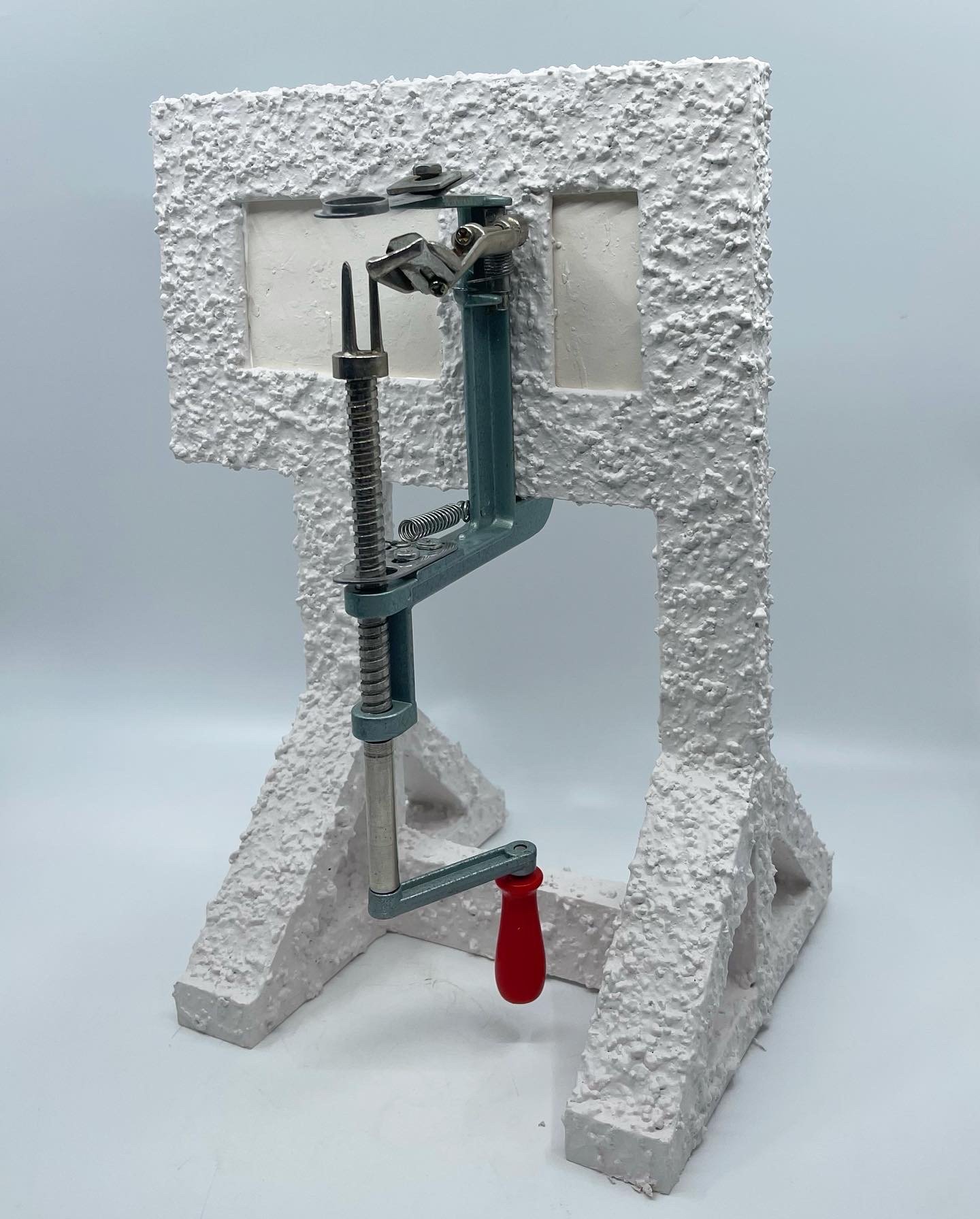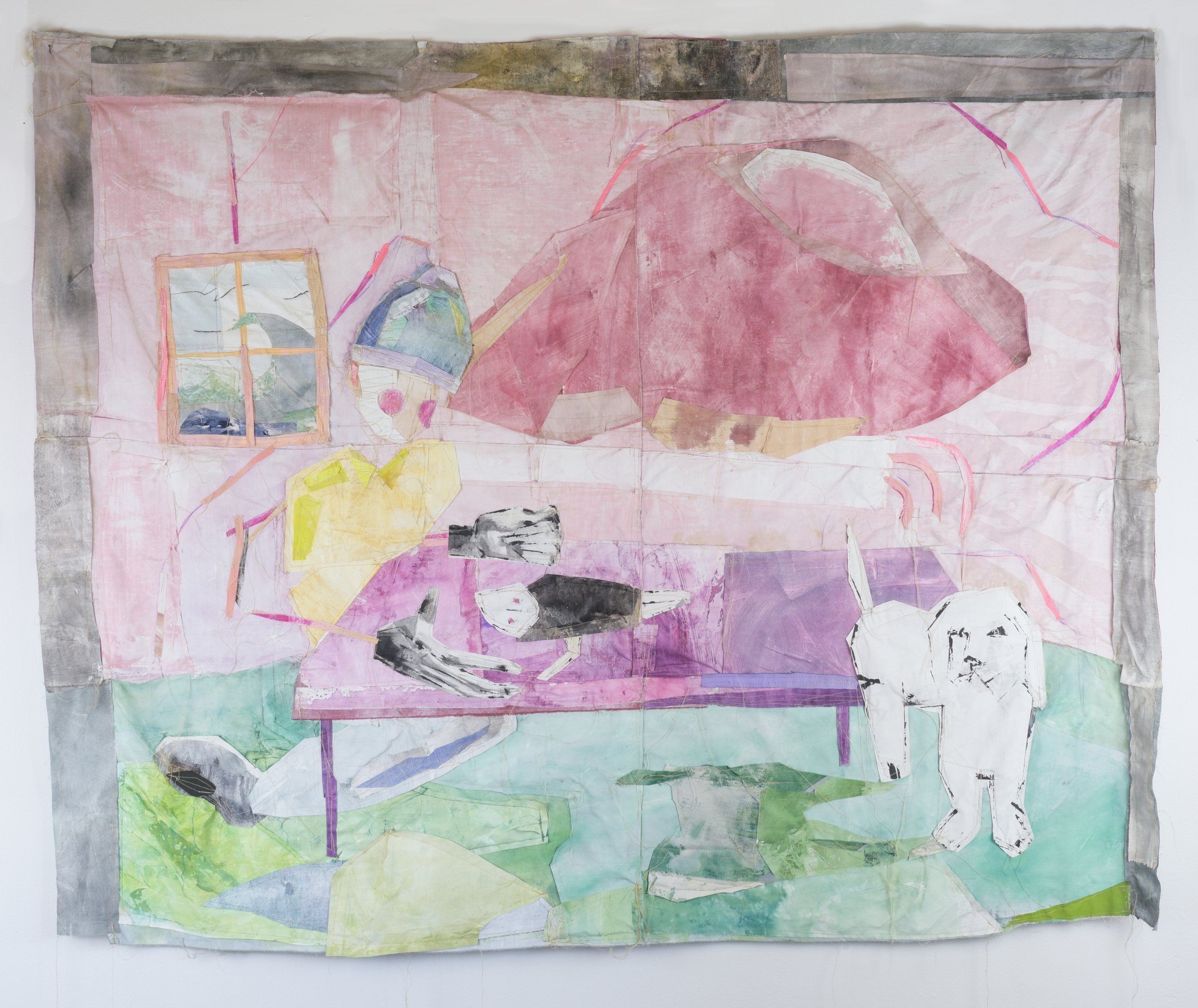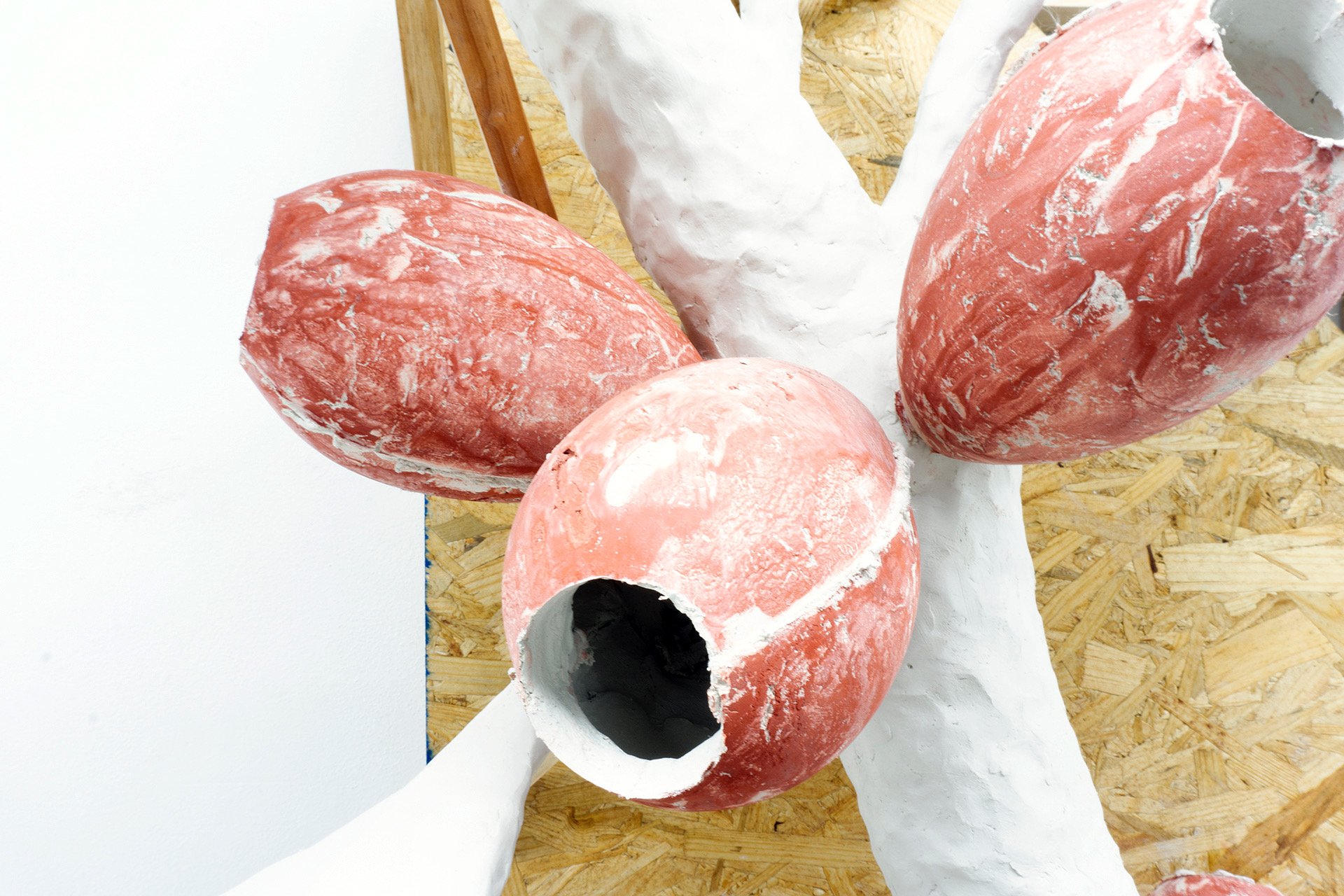ROY presents: Christopher von Gruben, Emma Kindall, Jennifer Masley, & Koen Vrij
Christopher von Gruben
Christopher’s work focuses on relationships and social structures around him, combined with elements of love and drug addiction, and his personal perception which creates the swirling, colorful nature of my paintings. Christopher is a 21 year old artist based in Berlin. He had his first solo show at the Neuköllner Salon, and he is participating in the Spiritus 3 Magazin.
ROY asks
What is your name and affirmed pronouns?
Christopher von Gruben (he/him)
How has art (whether it be your own or art in general) changed you?
Painting and creating have spun me in an endless circle questioning how I perceive, experience, and recreate my emotions and habits correlating with the outside world, and has opened a lot of doors in terms of understanding and fabricating one's own reality.
How did you start your artistic practice?
Just painting in my room corner, starting from acrylic and gouache, developing to oil. Depicting everything that drew my attention or thoughts and reworking it in a symbolic way.
When a first-time viewer sees your work, what is the first word that you hope they think when looking at it?
Surrounded. Especially for those larger paintings, I would love to see that the painted object abstracts itself into big brush strokes and color, drawing the person in front of it in. Something that isn't quite visible through screens and social media.
Emma Kindall
I have a desire to articulate trauma but an inability to touch it. Finding that I can’t walk directly into it, I tiptoe in slow circles, surrounding it. I build an imaginary realm encasing it, seeking to soften and rewrite it.
She kept us home from school and we planted a garden is a tapestry based on a memory, one that may or may not be true. The tapestry is a backdrop. Cactus and Dog Pack sit in close proximity and serve as props. I use these works to stage a feeling I don’t know how to name. The following text (written by my sister) is scrawled on the walls:
When I was a child, I learned you could find water in a cactus. Like milk in a coconut, I wondered how some things work. Like how come grandma and grandpa had a hot tub in Arizona?
When I was a child, I learned you could find water in the sky, and when the desert leaked all over us, my siblings and I practically sprawled out in the street. Like the egg on the sidewalk, or the lizard under your shoe after the long walk to school.
When I was a child, I learned the twins next door were getting hit. I heard the man in his garage yell at my mom for using his garbage can. I loved my grandparents like an ache in my side, because just like my dogs, I knew someday they would die.
One sock, two fish, and an entire legacy of inherited guilt is a backdrop to a scene that is in progress. It depicts the imaginary room I go to when I have too much to hold. In my mind, the room is made of concrete. It sits on a sandy hill in the middle of the ocean. To get there I climb into a wooden boat with all of my childhood pets. While in the room I look at hard things and then I enclose them in boxes, jars, and folders. This way, I can get back into the boat lighter than before.
I found her between the bed and the wall consists of stacked animations projected onto a fabric screen. Text, collage, and photographs are illuminated by projector light. The illuminated text reads:
I found her wedged between the wall and her bed all crouched down. I asked her if she was praying. I saw blood on the floor. My sister took me down to the basement and apologized for me having to see her like that. My sister and I sat on the kitchen ground and shook. Then we put on Rihanna and danced. My brother cried on the stairs because nobody remembered to explain it to him.
This video piece is about loving someone who is sick--about loving them so much you feel sick. It is about the ways we cope and the myths we make in order to rewrite, remember, and protect
ROY asks
What is your name and affirmed pronouns?
Emma Kindall (she/her/hers)
How has art (whether it be your own or art in general) changed you?
Art has been a way of processing my way through muck. Without it, I think I would be weighed down, knee deep.
How did you start your artistic practice?
I think I’ve always tried to make imagined things more tangible. I didn’t consider it an art practice until I was older.
When a first-time viewer sees your work, what is the first word that you hope they think when looking at it?
Words feel flimsy in my head. My sister says my brain is like alphabet soup. The letters float around, and I have to scoop many spoonfuls before I’m holding what I’m trying to say. I’d like a first-time viewer to find an entry point into the work. Maybe it’s a word. Maybe it’s a new feeling or an old feeling. Maybe it’s a visually pleasing arrangement of sticks.
Jennifer Masley
Jennifer’s practice is a mix of play and self reflection. She lets material take the lead and follow suit by exploring the boundaries of her own memories and the expectations. This way of working allows for her to honestly and authentically depict her lived experience and expose the nuances of everyday life. She is interested in the conceptual strength of using objects to create a narrative through metaphor. She gives context to place and personhood through structural components and the addition of discrete objects. She often builds tension by merging the familiar with illogical compositions to subvert initial assumptions about a work of art. Her aim is to connect with others by sharing my experiences and open the door to discussing the highs and lows of being human.
By creating facsimile through molding and casting Jennifer is able to dilute the original object into vulnerable, ghost-like versions that carry a more emotion. She often use these qualities as a gateway into metaphorically describing the nuances of the human condition. The frailty of coating something in porcelain and then displaying the object to emphasize its precariousness implores a gentle approach and consideration of it. Although frequently austere, she attempts to lift the tension through soft, warm colors and notes of dry humour. She wants the duality of life, which contains simultaneous experiences of delight and forlorn to also exist within the duality of the work.
ROY asks
What is your name and affirmed pronouns?
Jennifer Masley (she/her)
How has art (whether it be your own or art in general) changed you?
Art has given me access to a community of people, thinkers and makers that make me feel seen and that I have permission to express myself without limitation. It has changed the way I see the world. I have learned to see links between events, cultures, people and see the larger context of everything we (as artists) are contributing to. And it’s given me so much empathy for others.
How did you start your artistic practice?
My art practice was born from a supportive community, great friends, and lots of hard work. It feels like a pet or a plant I have to feed and nourish to keep alive. The making part is easy, but the confidence to make without inhibitions comes from what and who you surround yourself with.
When a first-time viewer sees your work, what is the first word that you hope they think when looking at it?
Art
Koen Vrij
My practice begins as a serendipitous encounter with nature mostly during my walks to the studio and is a continual dialog between the two dimensional and three dimensional. I take photographs of clippings I had taken from the natural flora. These then act as a visual library that informs my practice. Subconsciously, I have recognized that I continuingly compose these photos with a human made structure in the background. I find the juxtaposition between the two to be the most interesting aspect of this growing collection. They are culture and nature in one photograph.
The recurring conversation between the image and the object result in works that end up being three-dimensional drawings attached to the wall or placed on the floor. The drawings are abstracted but have references in nature.
My approach both visually and conceptually has been influenced by the affinity gained from my upbringing and my travels results in recurring patterns of scale, symmetry, and harmony. These drawings start with armatures and are followed by using an unfired plaster clay. This clay allows me to incorporate unfired materials and create an interaction between a variety of media. I have been gravitating towards standardized and highly manufactured materials to distort the language of clay with lumber, plastics, fibers and insulation foams. This transforms the clippings into something new; something recognizable as nature but abstracted through non-ceramic materials. The new connections between materials being formed create questions about when something is truly natural and when it is not.
Through my work of the past three years, I have come to realize that I have been exploring my immigration through the lenses of nature, horticulture, culture, and architecture. This exploration was sparked in my subconscious as I have spent some years observing the differences between my home country and this new one I have placed myself in. Seeing these two countries through the lens of my formative years in The Netherlands has embedded an affinity to the way I make work and has a familiarity and comfortable push towards harmony. Experiencing both places allows me to exploit, capture and manipulate the differences and similarities between my two homes. I have been able to meet people from diverse cultures and make new friends all over the world. I want to draw parallels between the natural and artificial world. Creating systems between worlds that we use to perceive this place we call home.
ROY asks
What is your name and affirmed pronouns?
Koen Vrij
How has art (whether it be your own or art in general) changed you?
Art has allowed me to travel across the united states and make friends that will last a lifetime while pursuing a degree in the arts
How did you start your artistic practice?
I started my art practice taking a required ceramics course in community college.
When a first-time viewer sees your work, what is the first word that you hope they think when looking at it?
Visceral




